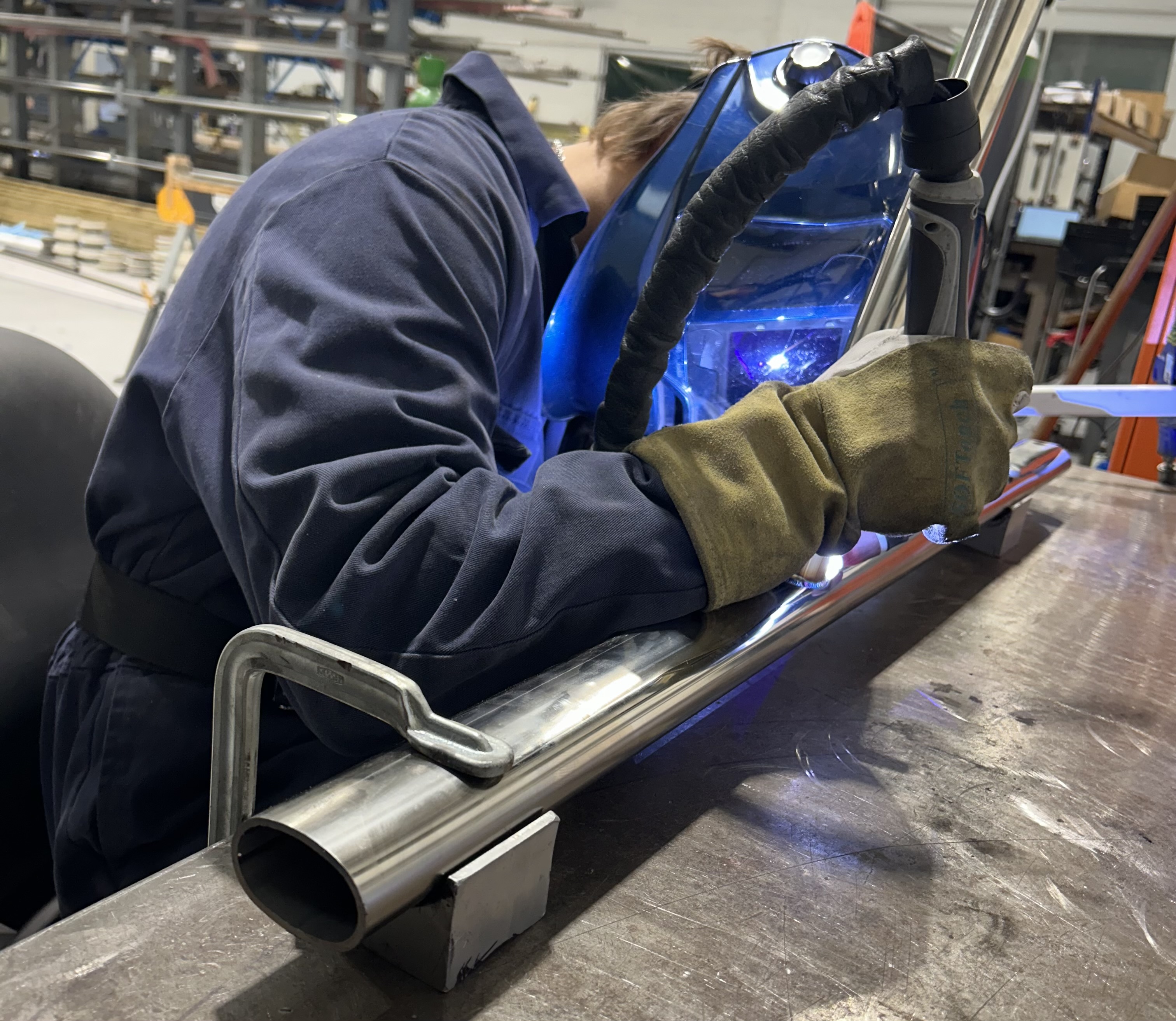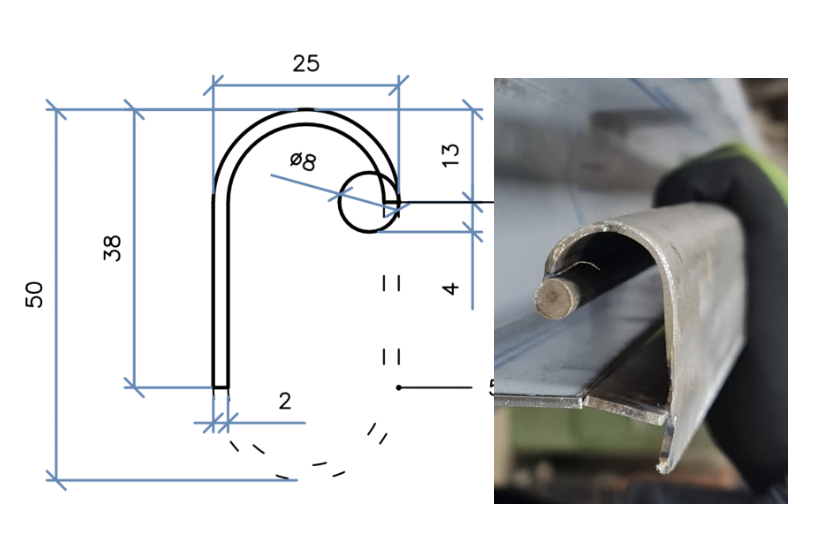Twisted tubes: 'so much more' than the traditional barley twist


Thanks to clever engineering capabilities, Timeless offer extreme flexibility when it comes to you being able to specify the style of twist you want for your tube application.
Our two unique twisted tube profiles – twisted square tube and twisted oval tube – are not bound by the restraints of the traditional barley twist form.
Clients are able to choose the pitch of twist and how many turns are made within a specified length of tubing. Sometimes an engineer or architect wants a tight continuous twist across a relatively short length of tubing – perhaps for a door handle or some decorative metal architecture. In this instance our engineers push the pitch to its limit to see what can be achieved, twisting the tube until it eventually buckles.

We use a small device that measures the rotations per minute while the oval or square tube is being twisted – the quicker the forming machine turns, the tighter the pitch is. Everything is carefully recorded to enable repeatability. It is extremely important that we use the same grade of material – and preferably from the same mill if this job is to be repeated for a long-term project.
Recent in-house tests show that when forming twisted oval and twisted square from stainless steel, the marine grade 316/L (1.4401/1.4404)forms better than its 304/L (1.4301/1.4307) counterpart. And as with all of our tube forming, the quality of the welded seam is vital – so we ensure that the round tube we form from is laser-welded or TIG-welded at the seam (seamless tubes are also great to work with, but expensive by comparison).
When we twist brass tube, we always use grade CZ108 H/H – this ‘basis’ brass tube forms well and is easy to fabricate. Despite brass being a softer metal than stainless steel, it essentially behaves the same when we twist it, requiring no additional preparation or processes.
Sometimes clients choose to have shorter straight sections either side of a central section of twisted tube. This allows fabricators or carpenters to join the tubes to other metalwork or timber with greater ease. We use this method for making spindles.
"Our twisted tube offers so much more than the traditional barley twist – especially when clients want subtle turns or straight sections at either end. It has a strong sculptural appeal, which people fall in love with as soon as they hold it. Clients are discovering that they needn't settle on straight spindles or rope twist brass tube any more, as we have the capability of creating true twists in the material. We're very proud of our twisted profiles" says Tom McMillan, MD of Timeless Tube.


More stories

Proving the strength of formed tubes using mechanical bend tests
An exploration into two independent axial load tests on our stainless steel formed profiles, plus a brief look at how we calculate the degree of bends for formed tubes.

Exhibitors Timeless Tube engineer tube-based showcase for Southern Manufacturing and Electronics trade fair
Visitors to leading trade show for engineers and manufacturers to experience a showcase of innovative tube designs

Cut Flat-sided Oval Tube Features in Stunning Recessed Handrail Project
Achieving unique designs often requires embracing trial and error. Timeless had the pleasure of working with pioneering UK-based bespoke steel fabricators Metcalfe on a one-of-a-kind recessed handrail